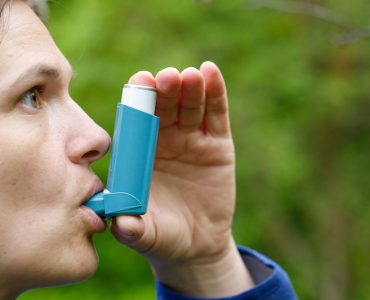The air moves in and out of the lungs using the bronchial tubes. The bronchial tubes always narrow down towards the lungs’ edges. But in the condition known as bronchiectasis, the bronchial tubes remain widened in an abnormal way permanently.
The mucus produced is cleared by the bronchial tubes with the help of tiny hairs called the cilia. The cilia lining bronchial tubes are destroyed in persons who suffer from bronchiectasis. This results in the building up of mucus, bacteria and dust in the bronchial tubes.
This can cause the formation of mucus the throat’s back in excessive amounts. This enhances the production of phlegm or sputum, which in turn can cause infection. It is very difficult to remove the phlegm which results in the damage of bronchial tubes due to infection.
Symptoms
The major symptoms of bronchiectasis include
- Unpleasant and persistent cough with yellow or green phlegm in huge quantities.
- Bad and unpleasant breath due to phlegm
- Phlegm containing blood due to breakage of blood vessels of bronchial tubes.
- Difficulty in breathing like wheezing
- General feeling of being unwell
- Tiredness
- Feeling of not eating
- Constant running nose
- Chronic nasal sinuses’ infection
- Chest infections that recur very often.
- Chest pain
- Joint pain
- Spitting blood while coughing
Causes
Regurgitation of acid from the stomach that can cause damage to the bronchial tubes.
The inhalation of the poisonous gases can cause sever damage to the tubes.
If any foreign body like peanut gets stuck, it can cause the damage of the bronchial tubes. If the foreign body is removed as soon as possible, the damage can be avoided.
Genetic condition such as cystic fibrosis and primary ciliary dyskinesia. In the first case, the bronchial tubes are very thick. In the latter case, the cilia that line the bronchial tubes do not function correctly.
Allergy which is caused by the presence of the fungal spores can result in the inflammation of the bronchial tubes.
Defective immunity system like in the case of deficiency of immunoglobulins
Critical infections like measles, whooping cough as well as pneumonia can cause the damage of the bronchial tubes leading to an early bronchiectasis.
Treatment
Treatment is usually done to clear the bronchial tubes. The methods that are used for treatment depends on the symptoms.
The presence of chest infections can be treated by prescribing antibiotics.
In case of extreme bronchiectasis, chest infections recur continuously. So the antibiotics are administered by using intravenous drips or inhalers to reduce the lung infections.
Oral corticosteroids help to reduce the inflammation and swelling of the bronchial tubes by acting on the immune system directly.
Physiotherapy is used to remove the mucus from the lungs and to keep the bronchial tubes clear.
Hypertonic saline is a salt solution that can be administered to reduce the stickiness of the mucus present in the lungs. It can also be used to decrease the quantity of mucus in the lungs. A nebuliser is used to clean the lungs so as to prevent any further infection.
Surgery is advised when bronchiectasis is present in only one lobe of the lung.













